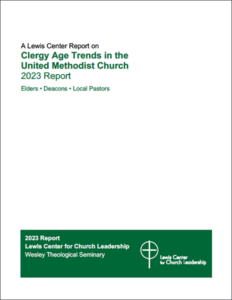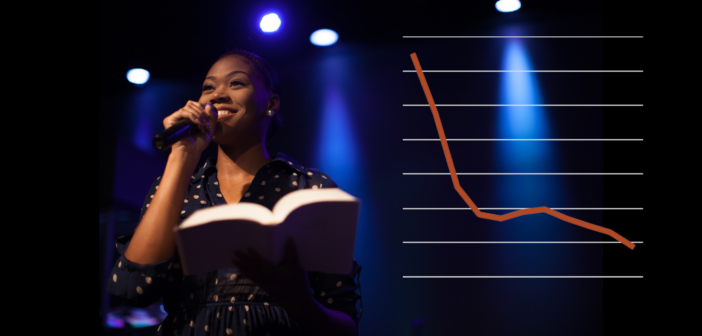Lovett H. Weems Jr. highlights the decline in numbers of young clergy in the Lewis Center’s annual Clergy Age Trends Report. A dramatic decline in young elders, deacons, and licensed local pastors continues in the United Methodist Church.
![]() Download the complete 2023 Clergy Age Trends Report.
Download the complete 2023 Clergy Age Trends Report.
A Korean language translation of this article is available through United Methodist Communications.
For eighteen years, the Lewis Center for Church Leadership has issued annual reports on clergy age trends in the United Methodist Church. The reports emerged originally from a perceived absence of young clergy compared to previous eras. Working in partnership with Wespath Benefits and Investments, the denominational pension agency, the Lewis Center provides yearly statistics on clergy of all ages. Currently the number of young clergy — particularly young elders — continues to cause concern.
Just before these annual reports began, the number of elders younger than 35 had reached what was then a record low of 850 in 2005 or about 5 percent of elders. Several conferences gave special attention to encouraging younger clergy. There was some improvement in the number of young elders, though not every year. From the low of 850 in 2005, the number climbed to 1,003 by 2016, at which time decline resumed.
Dramatic declines in young elders began in 2019.
Since 2019, the decline in numbers of young elders has accelerated. New record lows for young elders were set in 2021, 2022, and 2023. Since 2019, there has been a decline of 53 percent in the number of under-35 elders. The losses were comparable for men and women based on the proportion of each among young elders. The number of young elders in 2023 is 449, a loss of 199 in the past year.
In 1978, ten years after the formation of the United Methodist Church, 23 percent of active elders were younger than 35. By 1985, the proportion of young elders was still more than 15 percent. Young elders today represent about 4 percent of all active elders, a group that itself continues to decline annually.
The North Texas Conference and Texas Conference had the highest percentage of young elders at 8.8 percent in 2023. Four of the five U.S. jurisdictions are represented in the top ten conferences for the highest percentages of young elders. The largest total number of young elders (28) is in the Virginia Conference.
The proportion of elders between the ages of 35 and 54, historically the largest group of elders, is showing proportionate increases since a twenty-year decline beginning in 2000. This age group has now grown from a low of 38 percent of all elders in 2020 to 44 percent in 2023. Elders 55 to 73 constitute 52 percent of active elders, down from 53 percent last year.
Deacons and local pastors show similar declines.
Deacons and local pastors in recent decades have had a somewhat higher proportion of under-35 representation. That continues in 2023, but both groups saw declines in overall numbers and under-35 numbers.
There is a decrease in the number of young deacons in 2023, from 100 in 2022 to 74 this year. Young deacons comprise 8.2 percent of all active deacons in 2023, down from 11 percent last year. Keep in mind that the number of deacons in this report is lower than their presence in the denomination. This difference is because many deacons serve in work settings other than congregations and have pension plans through those agencies rather than Wespath Benefits, from which our numbers come.
There is a decrease in young local pastors in 2023 to 416 compared to 561 in 2022. There was also a decline in the percentage of young local pastors as a percentage of all local pastors to 7 percent from 8 percent last year. There are proportionately more young local pastors than young elders but fewer than young deacons. Elders and local pastors are appointed as pastors of congregations. In 1990, there were over five elders for each local pastor; today there are 1.6 elders for each local pastor. While elders and deacons are seeing some declines in the previous rising rates of older clergy from 55 to 72 years of age, this is not true for local pastors where 58 percent of all local pastors are in this oldest cohort.
 Related Resources
Related Resources
- Clergy Age Trends in the United Methodist Church, 1985-2023
- 5 Reasons the Church Still Needs Young Clergy by Lovett H. Weems Jr. and Ann A. Michel
- Finding Solutions to the Young Clergy Crisis featuring Bishop Janice Huie — Leading Ideas Talks podcast episode | Transcript
- A Call to Overinvest in the Young by Janice Huie
- What’s Keeping Younger People from Ordained Ministry in the United Methodist Church by Ann A. Michel







